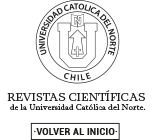Bipolar quadripartitioned single valued neutrosophic sets
DOI:
https://doi.org/10.22199/issn.0717-6279-2020-06-0095Keywords:
Single valued neutrosophic set, Quadripartitioned single valued neutrosophic sets, Bipolar quadripartitioned single valued neutrosophic setAbstract
The notion of simple bipolar quadripartition is presented valuable neutrosophic set. Some basic set theoretic terminologies, operations and properties of bipolar quadripartitioned single valued neutrosophic set are given here. Also different types of distances, similarity measures and entropy measure are discussed. Finally a decision making problem using the similarity measure technique of bipolar quadripartitioned single valued neutrosophic sets has been solved.
References
K. Atanassov, “Intuitionistic fuzzy sets”, Fuzzy sets and systems, vol. 20, no. 1, pp. 8796, Aug. 1986, doi: 10.1016/S0165-0114(86)80034-3
A. Aydoğdu, “On similarity and entropy of single valued neutrosophic sets”, General mathematics notes, vol. 29, no. 1, pp. 67-74, Jul. 2015. [On line]. Available: https://bit.ly/3oW0yrm
N. D. Belnap, “A useful four-valued logic”, in Modern uses of multiple-valued logic, J. M. Dunn and G. Epstein, Eds. Dordrecht: Springer, 1977, pp. 5–37, doi: 10.1007/978-94-010-1161-7_2
S. Broumi and F. Smarandache, "New distance and similarity measures of interval neutrosophic sets", 17th International Conference on Information Fusion (FUSION), Salamanca, 2014, pp. 1-7. [On line]. Available: https://bit.ly/2TWb9nP
R. Chatterjee, P. Majumdar, and S. K. Samanta, “On some similarity measures and entropy on quadripartitioned single valued neutrosophic sets”, Journal of intelligent and fuzzy systems, vol. 30, no. 4, pp. 2475-2485, 2016, doi: 10.3233/IFS-152017
I. Deli, M. Ali, and F. Smarandache, "Bipolar neutrosophic sets and their application based on multi-criteria decision making problems", 2015 International Conference on Advanced Mechatronic Systems (ICAMechS), Beijing, 2015, pp. 249-254, doi: 10.1109/ICAMechS.2015.7287068
F. Karaaslan, “Neutrosophic soft sets with applications in decision making”, International journal of information science and intelligent system, vol. 4, no. 2, pp. 1-20, 2015, doi: 10.5281/zenodo.23151
K. Lee, Bipolar-valued fuzzy sets and their operations, Proceedings of the International Conference on Intelligent Technologies, Bangkok, Thailand, 2000, pp. 307-312, 2000.
K. Lee, “Bipolar fuzzy subalgebras and bipolar fuzzy ideals of BCK/BCI algebras”, Bulletin of the Malaysian Mathematical Sciences Society, vol. 32, no. 3, pp. 361-373, 2009. [On line]. Available: https://bit.ly/35Y4lvu
P. Majumdar, “Neutrosophic sets and its applications to decision making”, in Computational intelligence for big data analysis, D. P. Acharjya, S. Dehuri, and S. Sanyal, Eds. Cham: Springer, pp. 97-115, 2015, doi: 10.1007/978-3-319-16598-1_4
J. M. Merigo and M. Casanovas, “Decision making with distance measures and induced aggregation operators”, Computers and industrial engineering, vol. 60, no. 1, pp. 66-76, Feb. 2011, doi: 10.1016/j.cie.2010.09.017
J. M. Merigo and M. Casanovas, “Induced aggregation operators in the Euclidean distance and its application in financial decision making”, Expert systems with applications, vol. 38, no. 6, pp. 7603-7608, Jun. 2011, doi: 10.1016/j.eswa.2010.12.103
J. M. Merigo and R.R. Yager, “Generalized moving averages, distance measures and OWA operators”, International journal of uncertainty, fuzziness and knowledge-based systems, vol. 21, no. 4, pp. 533-559, 2013, doi: 10.1142/S0218488513500268
A. B. Saeid, “Bipolar-valued fuzzy BCK/BCI-algebras”, World applied sciences journal, vol. 7, no. 11, pp. 1404-1411, 2009. [On line]. Available: https://bit.ly/3l0cUfR
V. Santhi and G. Shyamala, Notes on bipolar-valued multi fuzzy subgroups of a group, International journal mathematics archive, vol. 6, no. 6, pp. 22295046, 2015. [On line], Available: https://bit.ly/3erUn9x
F. Smarandache, "Neutrosophic set-a generalization of the intuitionistic fuzzy set”, 2006 IEEE International Conference on Granular Computing, Atlanta, GA, USA, 2006, pp. 38-42, doi: 10.1109/GRC.2006.1635754
F. Smarandache, "A geometric interpretation of the neutrosophic set — A generalization of the intuitionistic fuzzy set”, 2011 IEEE International Conference on Granular Computing, Kaohsiung, 2011, pp. 602-606, doi: 10.1109/GRC.2011.6122665
F. Smarandache, “ Neutrosophic Set - a unifying field in set”, in A unifying field in logics : neutrosophic logic : neutrosophy, neutrosophic set, neutrosophic probability, 2nd ed., Rehoboth , DE: American Research Press, 2000, pp. 111–114. [On line]. Available: https://bit.ly/3oVpzTz
H. Wang, F. Smarandache, Y. Zhang, and R. Sunderraman, “Single valued neutrosophic sets”, Review of the Air Force Academy, no. 1, pp. 10-14, 2010. [On line]. Available: https://bit.ly/3oWGd5l
J. Ye, “Vector similarity measures of simplified neutrosophic sets and their application in multicriteria decision making”, International journal fuzzy systems, vol. 16, no. 2, pp. 204215, 2014. [On line]. Available: https://bit.ly/38pL7SH
J. Ye and Q. Zhang, “Single Valued Neutrosophic Similarity Measures for Multiple Attribute Decision-Making”,Neutrosophic sets and systems, vol. 2, pp. 48-54, Sep. 2020. [On line]. Available: https://bit.ly/387ppTc
J. Ye and Q. Zheng, “Dice similarity measure between single valued neutrosophic multisets and its application in medical diagnosis”, Neutrosophic sets and systems, vol. 6, pp. 48-52, 2014, doi: 10.5281/zenodo.22448
J. Ye and Q. Zheng, “Multi-period medical diagnosis method using a single valued neutrosophic similarity measure based on tangent function”, Computer methods and programs in biomedicine, vol. 123, pp. 142-149, Jan. 2016, doi: 10.1016/j.cmpb.2015.10.002
L. A. Zadeh, “Fuzzy sets”, Information and control, vol. 8, no. 3, pp. 338-353, Jun. 1965, doi: 10.1016/S0019-9958(65)90241-X
Published
How to Cite
Issue
Section
Copyright (c) 2020 Kalyan Sinha, Pinaki Majumdar

This work is licensed under a Creative Commons Attribution 4.0 International License.
-
Attribution — You must give appropriate credit, provide a link to the license, and indicate if changes were made. You may do so in any reasonable manner, but not in any way that suggests the licensor endorses you or your use.
- No additional restrictions — You may not apply legal terms or technological measures that legally restrict others from doing anything the license permits.












